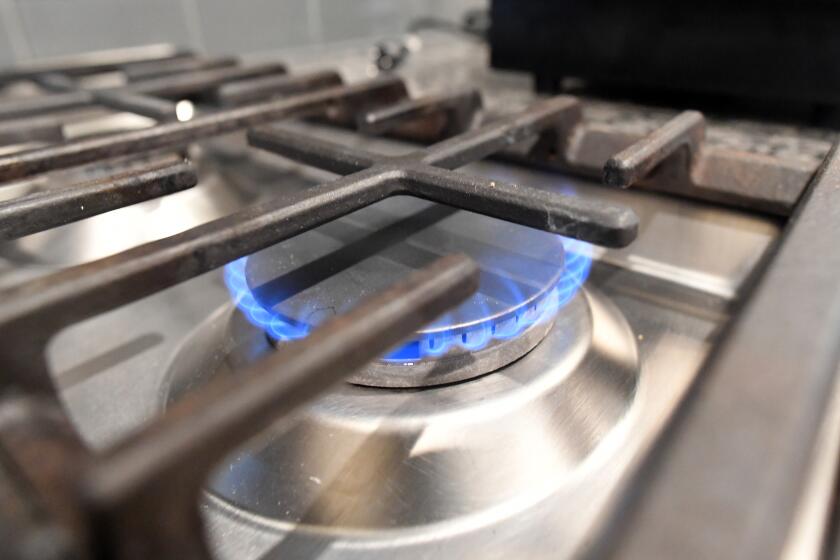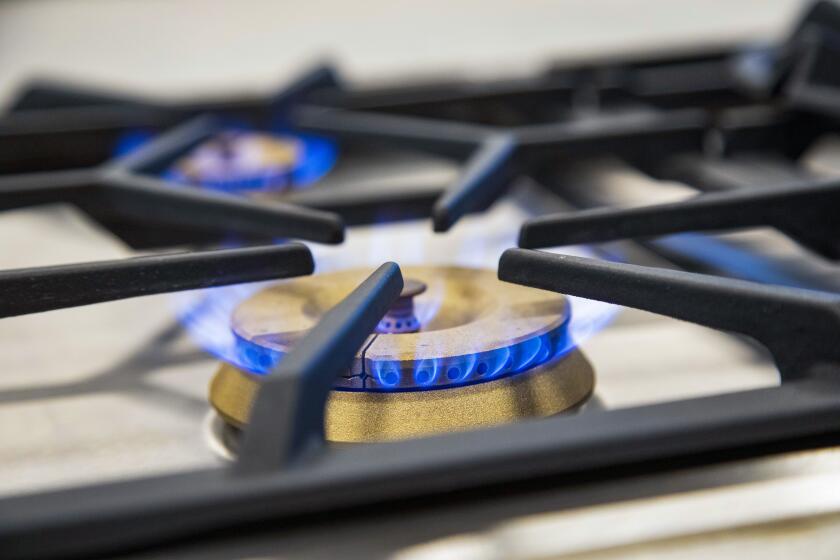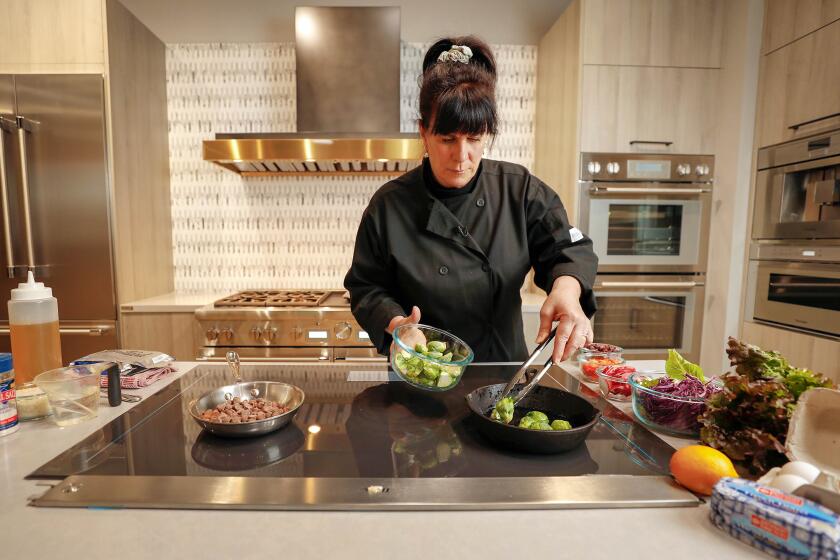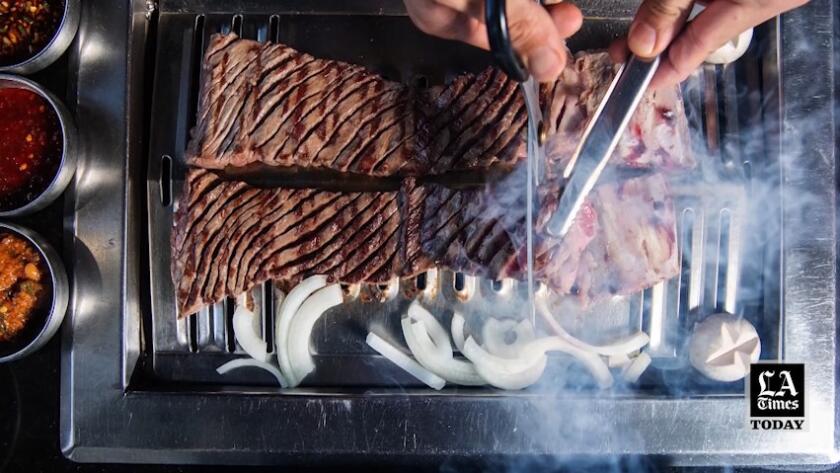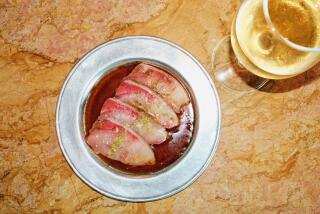The end of Korean BBQ in L.A.? What the gas stove ban means for your fave restaurants
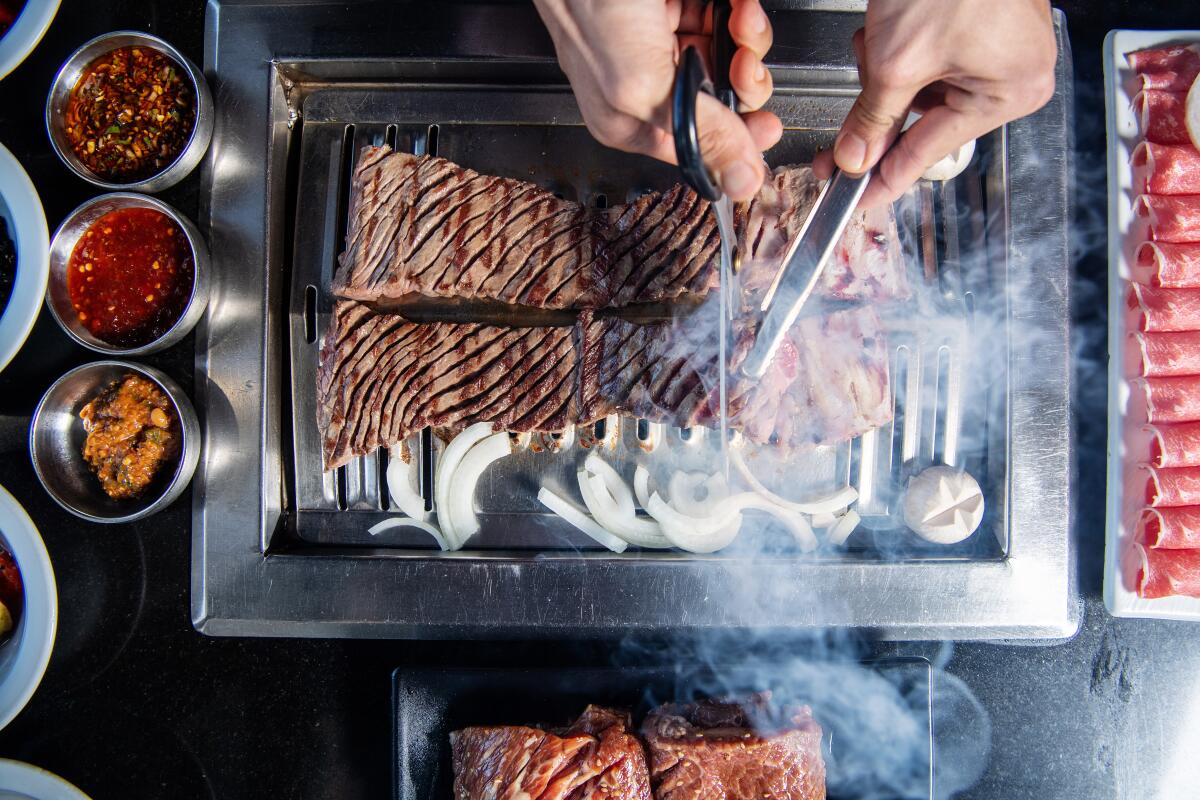
Chinese and Korean chefs in Los Angeles are worried that a ban on future gas stoves may alter their kitchens forever.
- Share via
Dinner at Park’s BBQ in Koreatown inevitably starts with a small flame.
Even before a greeting and the drink order, your server lifts the grate on your table grill and turns a knob. There’s the faint smell of gas and a barely audible hiss. At the click of a lighter, the flames start to dance under the grill.
It’s a ritual that starts the meal, repeated at so many Korean BBQ restaurants around town, readying the table for the procession of meats, vegetables and seafood to come.
“The tabletop gas grill is an important part of our Korean food culture,” said Ryan Park, general manager of Park’s BBQ. “It’s connected to the taste of the food and how we grill the meat.”
All that may change by 2023 — at least in new Los Angeles buildings. The L.A. City Council last week passed a motion that would ban most gas appliances in new residential and commercial construction in the city, citing an effort to combat climate change.
L.A. County at large aims to achieve carbon neutrality by 2045.
Climate change spurred Friday’s unanimous vote by the Los Angeles City Council.
The motion requires related city agencies to prepare an implementation plan for approval by the end of the year.
“The passage of this legislation kick-starts a process with several stages before full implementation,” Councilmember Nithya Raman, lead author on the policy, wrote in a statement to The Times.
“Ultimately, it’s too early to say what the impact on commercial kitchens will be,” the statement added.
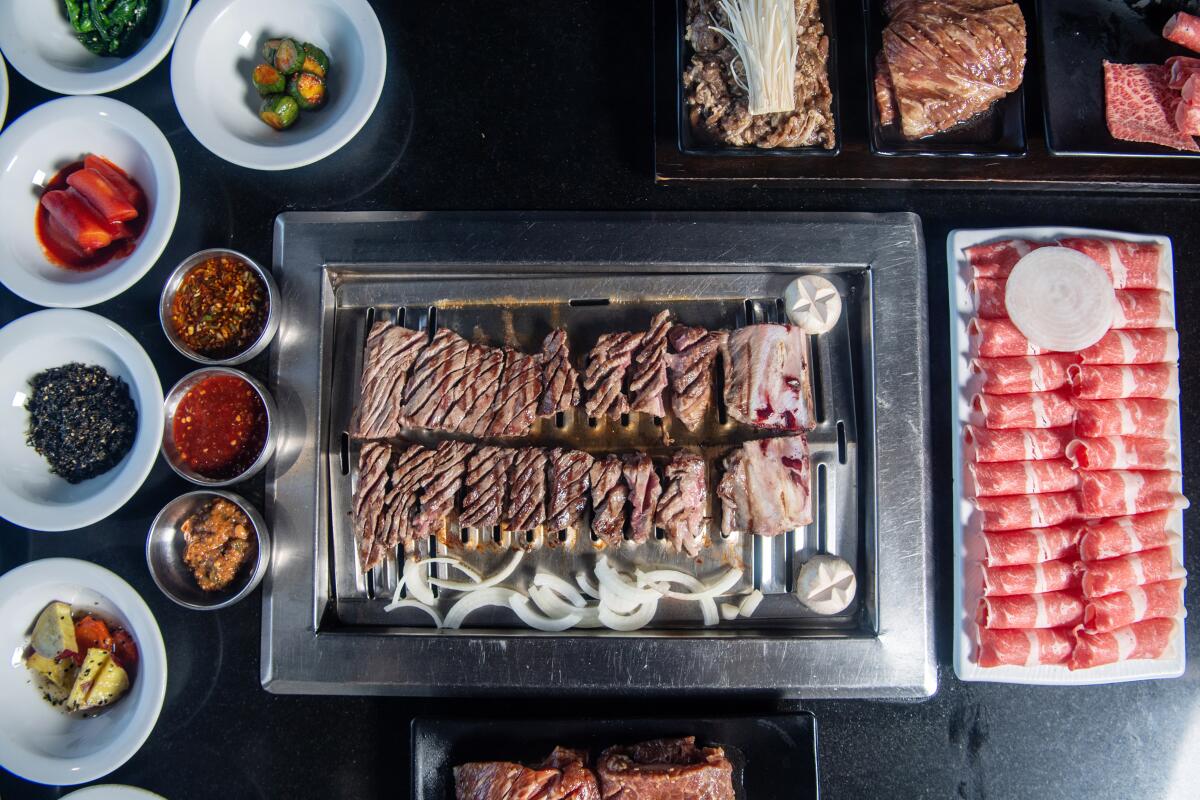
Los Angeles is the latest to move toward phasing out gas in new buildings, following similar ordinances passed in more than 50 other cities and counties in California, including Oakland, Ojai and Santa Clara. But voices in the restaurant world are already sounding an alarm.
“With the sheer number of restaurants in L.A., this will have a massive impact on the future of the restaurant industry and how many diverse cuisines are offered,” said Jot Condie, president of the California Restaurant Assn.
Without any specific exceptions outlined for restaurants in Los Angeles just yet, many chefs and restaurants that rely on gas to cook their food are expressing worries. The move could increase the cost of doing business and push some cooking techniques, and many styles of cooking, out of the city’s new developments.
Our tests show the switch from gas cooking to an induction stove may be easier than you think.
Leo and Lydia Lee, owners of RiceBox, a Cantonese BBQ restaurant in downtown Los Angeles, use gas to cook the entirety of their menu, with the exception of rice. Gas powers the stoves used to cook dishes in a wok and the custom barbecue oven used to prepare the restaurant’s signature char siu Duroc pork, roasted low and slow with a sweet honey glaze.
“The wok itself is really essential to Asian cuisine,” Leo said. “By taking gas away, you’re telling us we cannot use woks anymore, essentially taking away our identity and heritage. It forces us to adapt to American culture.”
If there’s no gas, Lee said he “won’t even consider” opening a second location of RiceBox in Los Angeles.
‘Flame is critical’
The California Restaurant Assn., which lobbies for California restaurant owners, attempted to block a 2019 phaseout of gas hookups in all newly constructed residential buildings and most nonresidential buildings in Berkeley. In a lawsuit filed against the city, which is still being litigated, the CRA argued that restaurants “rely on gas for cooking particular types of food, whether it be flame-seared meats, charred vegetables, or the use of intense heat from a flame under a wok.”
The suit went on to argue that the CRA’s members “will be unable to prepare many of their specialties without natural gas and will lose speed and control over the manner and flavor of food preparation.”
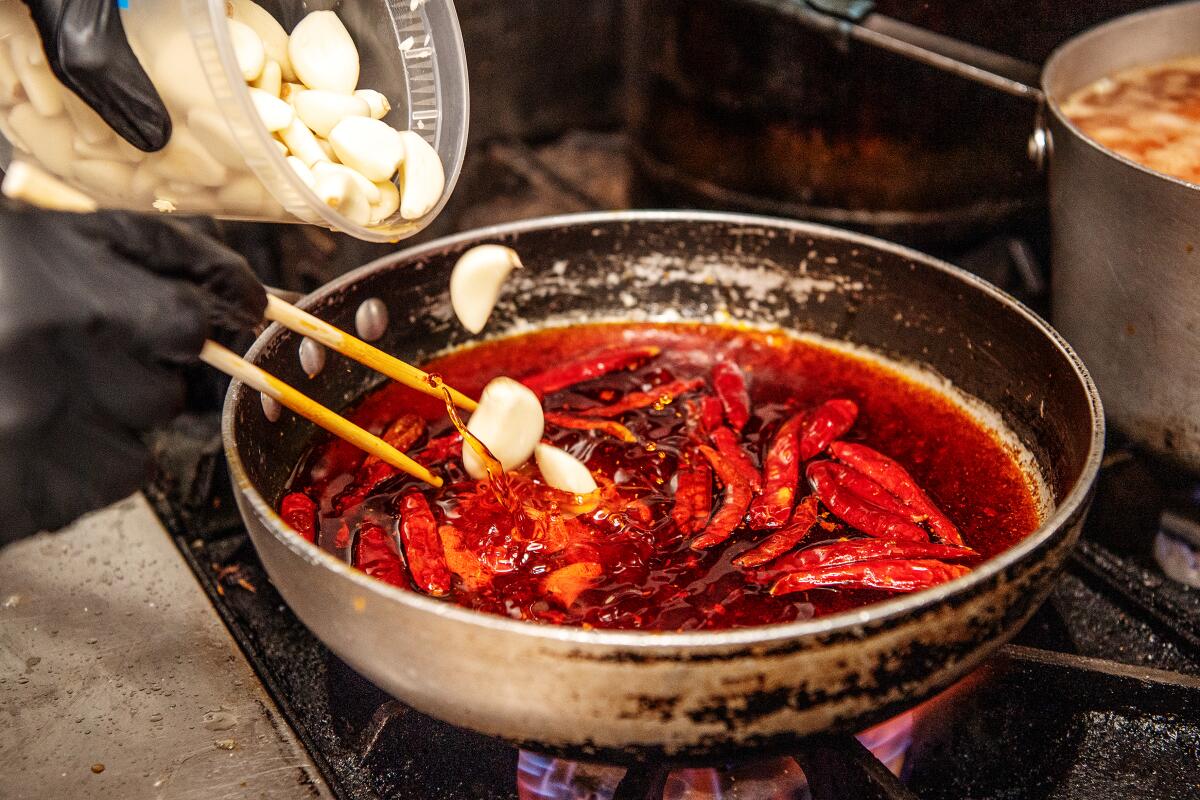
“Flame is critical for [chefs] to create their masterpieces,” said Condie of the association members. “It’s like asking an artist to throw away all their small paintbrushes and start painting with a roller.”
At Chengdu Taste in Alhambra, one of the city’s most lauded Sichuan restaurants, managing partner Sean Xie said everything from the fried rice, to the fiery stir-fried eggplant and the kung pao chicken, is prepared using high heat on gas-powered equipment.
“There is no substitute if you ban gas equipment,” Xie said. “For Chinese cuisine, we use a technique called stir-frying and the temperature is key.”
California sparked a national push to ban gas lines into homes. Its success hinges on persuading home cooks the gas stove is obsolete.
Many of the dishes at Chengdu Taste require a jolt of heat to caramelize and sear the surface of the meats, vegetables and seafood; something Xie said can only be achieved by cranking up the heat and getting to a certain temperature, quickly.
“Electricity just doesn’t get to that high temperature in a short period of time, and that’s associated with the flavor of the food,” he said.

Wok hei (“breath of the wok”), the distinct flavor imparted to food when cooked at high temperatures in a wok, is the hallmark of certain dishes. It’s that toasted, browned, charred flavor that gives a bowl of noodles, clams in black bean sauce, string beans and anything else cooked this way, that covetable, kissed-by-fire smoky element.
Cookbook author and historian Grace Young describes wok hei in her 2004 book “The Wisdom of the Chinese Kitchen” as “when a wok breathes energy into a stir-fry, giving foods a unique concentrated flavor and aroma.”
It’s an essential component of some of the dishes at Bryant Ng’s Cassia in Santa Monica, where 20% of the dishes are cooked using a wok or a tandoor oven, both powered by gas.
“With the wok … it’s not just the high heat that makes it unique and gives the food that ‘wok hei,’ it’s also the natural flaming of the oils and moisture as the food in the wok is tossed and cooked,” Ng wrote in an email. “You can’t really replicate that with something electric without an actual flame. So most dishes in the wok would lose some of that wok hei character, which is fundamental to many (not all) dishes cooked in the wok.”
While it would be hard to make the switch to electric or induction, Ng does think it is possible.
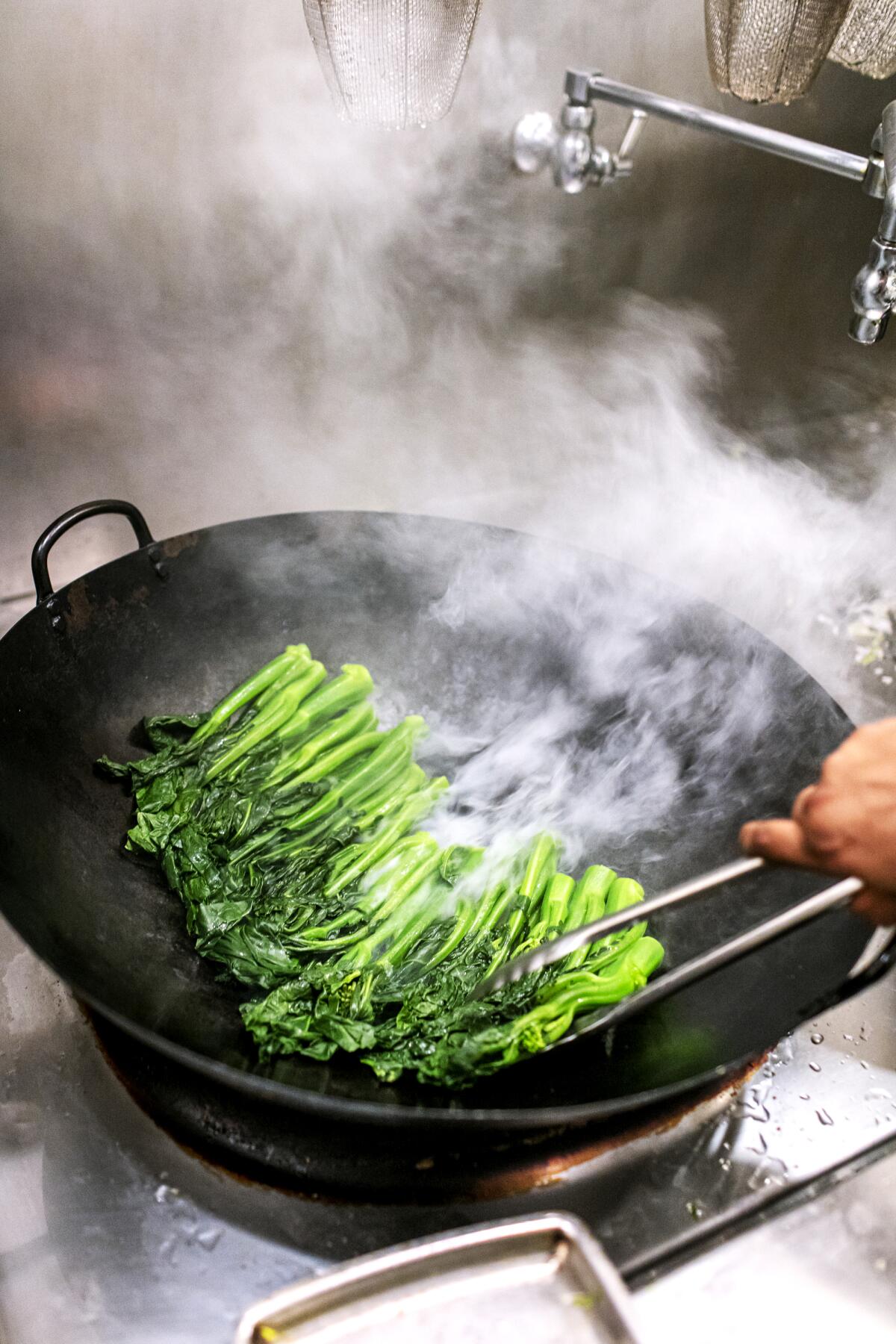
Condie is hoping for an exemption for L.A. restaurants, similar to the infeasibility waivers considered for restaurants in Sacramento that can show challenges posed by electrifying the business.
“For the most part, I do believe most cooking can be done with electric or induction cooking equipment, but it would require a lot of re-training to get there, which isn’t necessarily a bad thing and better for the environment,” wrote Ng. “But you’ll have to have the resources to do so…”
Xie estimates that he pays around $500 to $700 a month on gas, and about $1,200 on electricity.
Lee said that running an all-electric kitchen would likely double his monthly expenses. There’s also the issue of purchasing new, electric equipment and getting stuck with your existing stoves and ovens, with little chance of reselling them on a secondary market full of other business owners making the transition to electric.
“It may be prohibitive for many restaurants,” wrote Ng. “And would discriminate against restaurants owned by POC.”
But the city appears poised to move forward. “The question,” the council motion states, “is not if we will require decarbonized construction for new buildings — but when.”
- Share via
Watch L.A. Times Today at 7 p.m. on Spectrum News 1 on Channel 1 or live stream on the Spectrum News App. Palos Verdes Peninsula and Orange County viewers can watch on Cox Systems on channel 99.
More to Read
Eat your way across L.A.
Get our weekly Tasting Notes newsletter for reviews, news and more.
You may occasionally receive promotional content from the Los Angeles Times.
